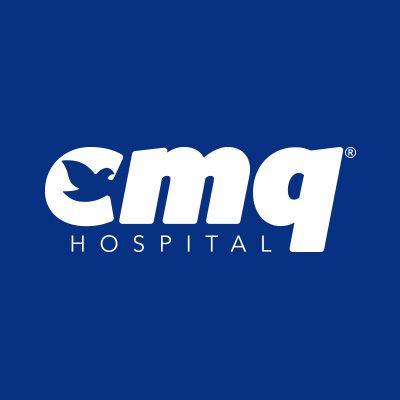Medical Breakthrough in Puerto Vallarta: The First-Ever Cardioneuroablation Procedure at Hospital CMQ Riviera Nayarit
Setting a Milestone in the Region: Our Hospitals Are The Leaders in Cardiac Care
An exciting medical breakthrough for Puerto Vallarta and Banderas Bay, the first-ever Cardioneuroablation procedure was performed at Hospital CMQ Riviera Nayarit. This groundbreaking procedure is bringing a new era in the treatment of severe syncope. Offering hope and relief to those who struggle with this debilitating condition.
With the first Cardioneuroablation surgery in the region, our medical team at Hospital CMQ Riviera Nayarit brings a new horizon to the treatment of heart conditions. At the same time, we strengthen our role as the leaders in state-of-the-art cardiovascular care on the Mexican Pacific coast. Moreover, this achievement not only brings benefits to our local patients. It also draws the attention of the international medical community, highlighting the potential and capacity for excellence and innovation in the regions of Puerto Vallarta and Banderas Bay.
Cardioneural Ablation, A Success Story at Hospital CMQ Riviera Nayarit
One of the most striking testimonies of the benefits of Cardioneuroablation is the success story of our 37-year-old patient, who for years faced recurring episodes of fainting spells that greatly impacted his quality of life. Fortunately, after searching for answers and solutions, he was referred to Dr. Carlos Hernandez, one of the leading cardiologists at Hospital CMQ Riviera Nayarit.
From his first visit with Dr. Hernandez, our patient received outstanding attention and care. Initially, they talked about his complaints and his clinical record. Subsequently, he had a series of lab tests done. Afterward, Dr. Hernandez conducted a tilt table test to evaluate our patient’s cardiovascular response. Certainly, this study revealed a worrisome pattern of severe syncopes. “When we performed the tilt table study and Holter study on our young patient, we discovered that he had a very low heart rate and this triggered a concerning pattern of serious fainting spells,” says Dr. Hernandez.
Therefore, after an exhaustive analysis, it was determined that the best course of treatment to address the root of the problem and effectively eliminate the fainting episodes was Cardioneuroablation. “Previously, this type of issue was treated with the placement of a pacemaker. However, in such a young patient, this option was not viable. Since there is a greater risk of complications due to the frequent replacement of the pacemaker that would be required,” adds Dr. Carlos Hernandez.
Our patient’s success story is a heartwarming testament to the world-class medical care and commitment provided by our healthcare professionals at Hospital CMQ.
A Medical Breakthrough: The First Cardioneuroablation Surgery In Puerto Vallarta
A Cardioneuroablation procedure combines the expertise of clinical cardiology with the precision of electrophysiology to address syncopal episodes at their neural origins. During this procedure, catheters are carefully guided into the heart to pinpoint and ablate the nerves responsible. Consequently, this approach aims to restore the heart’s electrical balance. Moreover, it prevents future episodes, offering patients a renewed and improved life, free from the debilitating effects of a syncope. For our young patient, this procedure not only represents a solution to his fainting spells. It means a new chance to live a fulfilling and worry-free life.
Our medical team uses state-of-the-art technology, including the EnSite Velocity Cardiac Mapping System from Abbot Cardiovascular. Specifically, this advanced cardiac mapping system provides a detailed and accurate visualization of the heart’s electrical system. In addition, it allows physicians to precisely identify the neural focal points responsible for causing recurring syncopes. With this tool, they were able to selectively ablate these nerve centers. And effectively restore the heart’s electrical balance and prevent future episodes of fainting.

Specialists’ Expertise: Meet The Team Behind The Success
This success story would not have been possible without our dedicated team led by two outstanding cardiology specialists: Dr. Carlos Hernandez and Dr. Alex Pacheco Bouthillier. The Vallarta Medical Community widely recognizes Dr. Carlos Hernandez for his expertise and skills in Clinical Cardiology. On the other hand, Dr. Alex Pacheco Bouthillier brings a strong background in electrophysiology to this dynamic team.
Together, Dr. Hernandez and Dr. Pacheco Bouthillier form a remarkable team that combines their clinical expertise with a specialization in electrophysiology, thus ensuring the best care and results for their patients. Without a doubt, their leadership and dedication were fundamental to the success of the first Cardioneuroablation surgery. This achievement sets a new standard in cutting-edge cardiovascular care in the region.

Meet Dr. Alex Pacheco Bouthillier, a National Leader and Pioneer in Clinical Cardiology with a High Specialty in Electrophysiology
Dr. Alex Pacheco Bouthillier is a distinguished Cardiologist who graduated from the National Autonomous University of Mexico (UNAM). In turn, his passion and commitment led him to specialize in Electrophysiology at the prestigious Centro Medico Nacional Siglo XXI Cardiology Hospital. Due to his extensive academic background and experience, Dr. Bouthillier is a national leader in the field of Cardiac Electrophysiology. He has excelled in his ability to diagnose and treat a wide range of complex cardiac disorders.
Consequently, with a solid reputation and his commitment to medical excellence, Dr. Pacheco Bouthillier is a distinguished figure in cardiovascular care in Mexico. Therefore, we are extremely happy to have Dr. Alex Pacheco Bouthillier’s expertise in this groundbreaking procedure at Hospital CMQ. We are fortunate and proud to witness his commitment to medical excellence and his contribution to the progress of cardiovascular care. Most importantly, this is the first time Dr. Pacheco Bouthillier performs the cardioneuroablation procedure in Puerto Vallarta and the Banderas Bay region, and we are excited to have the opportunity to learn from his knowledge and skills. We look forward to having his successful involvement again in future procedures, bringing hope and innovative solutions to our patients.

From Preparation to Discharge: A Detailed Look at the Steps of Cardioneuroablation
Cardioneuroablation is a highly specialized procedure that requires careful preparation and execution to ensure its success. Initially, its preparation begins with a thorough evaluation of the patient. After that, specialized cardiac tests will determine if the patient is a candidate for this minimally invasive procedure. In particular, it is worth mentioning that this procedure doesn’t need general anesthesia. The patient is under sedation, which reduces the surgical risk.
Once in the operating room, the medical team begins inserting special catheters guided by images provided by the advanced cardiac mapping technology from Abbott Cardiology. Thanks to this technology, physicians can precisely identify the nerve endings responsible for the fainting episodes and then selectively ablate and remove them.
At the same time, throughout the procedure, the patient’s cardiac activity is carefully monitored. Subsequently, once the intervention is over, there is a final evaluation to determine the success of the procedure. Finally, the patient will spend a night in the ICU. In there, he will be under medical supervision for one night and will then be transferred to a hospital room.
Recovery Following Cardioneuroablation
Although each case may vary, most patients can expect to be discharged from the hospital after approximately 48 hours. During this time, the patient’s condition is closely monitored for any signs of complications or side effects. Nevertheless, it is possible to experience some discomfort in the area where the catheter was placed. Fortunately, this is usually temporary and tends to improve with time.
After our patient is discharged from the hospital, Dr. Hernandez provides a postoperative care plan that includes follow-up visits and rest. In addition, it is necessary to follow some recommendations such as: limiting physical activity, following special dietary restrictions, and taking medications to prevent infections and manage swelling. To summarize, recovery after Cardioneuroablation is a gradual process that requires some patience. Certainly, with time and proper care, patients can expect major improvements. Such as experiencing a significant improvement in their quality of life and a reduction in severe syncope symptoms.
Hospital CMQ Riviera Nayarit: Committed to Excellence in Cardiac Care
At Hospital CMQ Riviera Nayarit, our mission is to provide the highest quality medical care, and thus, we are committed to excellence in cardiac care. Following our mission, we are deeply proud of the success of the first-ever Cardioneuroablation surgery held both in Puerto Vallarta and at our hospitals.
This achievement is not only proof of the talent and dedication of our outstanding specialists but also of our firm commitment to offering advanced and effective treatment options in the region. For this reason, we will continue to work relentlessly to stay at the forefront of medical innovation and provide the highest level of care to all our patients.
Frequently Asked Questions about Cardioneuroablation
Cardioneuroablation is an innovative procedure that identifies and eliminates nerve foci. The ones responsible for severe fainting, restoring the electrical balance of the heart.
The benefits include the elimination of fainting episodes, improvement in quality of life, and reduction of the risk of serious complications associated with severe syncope.
Recovery time varies, but patients are generally discharged after 48 hours. It is also necessary to follow your doctor’s recommendations to ensure improvement in the days following the procedure.
Ideal candidates are those who suffer from severe fainting spells and have been evaluated to rule out other cardiac or neurological causes. In addition, a thorough evaluation will determine if you are a candidate for this procedure.




